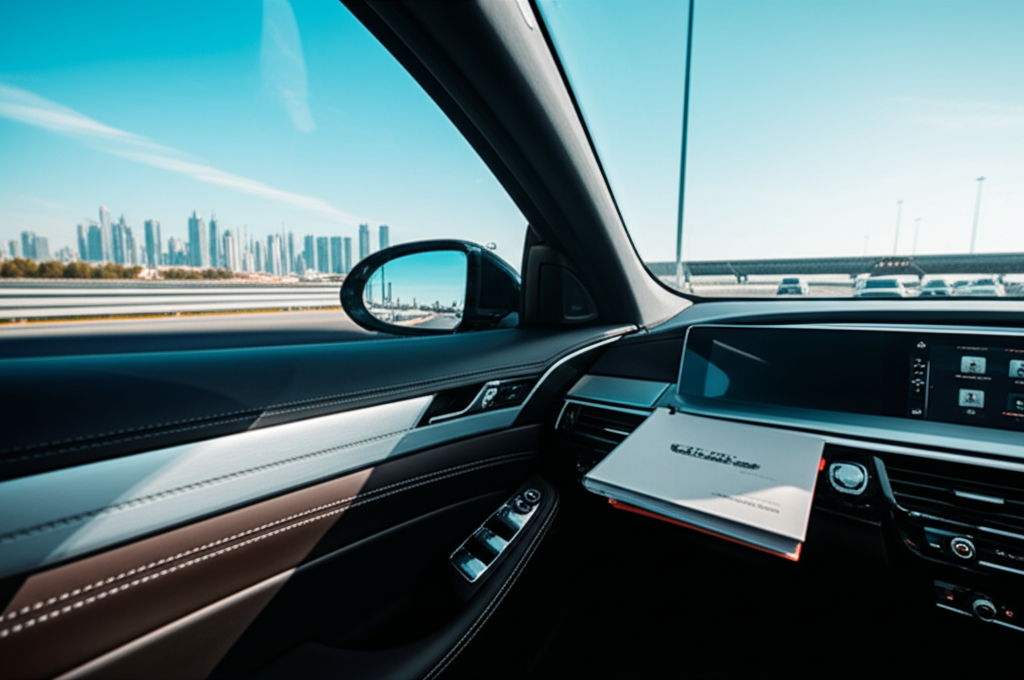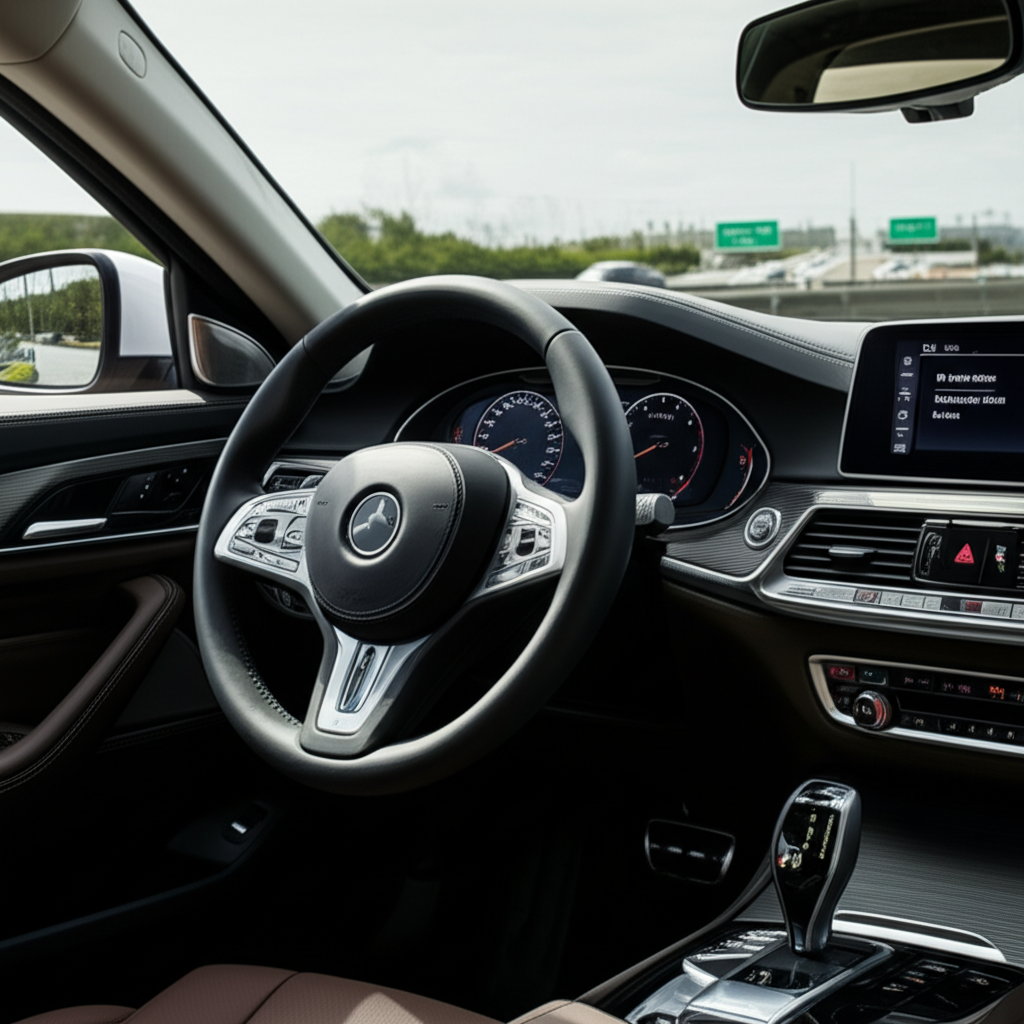Dubai Visa Guide: Your Essential Checklist

Your Dubai Visa Guide: An Essential Checklist for a Smooth Journey
Key Takeaways:
Understand visa types and your eligibility.
Gather all required documents accurately.
Complete the application form meticulously.
Submit your application through official channels.
Allow ample processing time.
Prepare for potential interviews or additional checks.
Planning a trip to Dubai, a city synonymous with innovation and luxury, is an exciting prospect. Whether you’re visiting for leisure, business, or to explore opportunities, understanding the visa process is crucial. Many travelers find the requirements confusing, leading to unnecessary stress. This guide breaks down the process into simple steps, providing you with an essential checklist to ensure your Dubai visa application is smooth and successful. Get ready to experience the marvels of Dubai with confidence, knowing your travel documents are in order.
Understanding Dubai Visa Requirements: Who Needs One?
Navigating international travel often begins with understanding visa regulations. For many nationalities, the United Arab Emirates (UAE), including Dubai, requires a visa to enter. The type of visa you need depends on your nationality, the purpose of your visit, and your intended duration of stay. It’s important to note that some countries have visa-free entry agreements with the UAE, while others require a visa obtained either before arrival or upon arrival. This section will help you pinpoint your specific requirements.
Visa-Free Entry vs. Visa Application
The UAE has bilateral agreements with many countries that allow their citizens to enter without a prior visa. For instance, citizens of the USA, UK, and many EU countries can typically enter for tourism or short stays without needing to apply for a visa in advance; they receive a visa on arrival. However, this on-arrival visa is usually for a limited period, often 30 or 90 days.
For those who do not qualify for visa-free entry, a visa application is necessary. This can be a complex process if not approached systematically. The application usually involves submitting a detailed form and supporting documents to the relevant UAE immigration authorities or through authorized intermediaries like airlines, hotel groups, or visa processing centers.
Common Visa Types for Dubai Visitors
Dubai offers a range of visa options to suit different travel needs. Understanding these is the first step in preparing your application.
Tourist Visas
This is the most common type of visa for individuals visiting Dubai for tourism, visiting family or friends, or attending short events. They are typically valid for 30 or 90 days, with single or multiple entry options. The duration of your stay will dictate the specific tourist visa you should apply for.
Business Visas
If your visit is for business purposes, such as attending meetings, conferences, or exploring investment opportunities, a business visa might be appropriate. These often have similar validity periods to tourist visas but may require additional documentation from the sponsoring company or organization in Dubai.
Transit Visas
If you are transiting through Dubai International Airport (DXB) for a significant layover (usually longer than 8 hours) and wish to leave the airport, you may need a transit visa. Airlines often facilitate these visas for passengers with long layovers, allowing you to explore the city briefly before your onward journey.
Other Visa Categories
Beyond these common types, Dubai offers specialized visas for specific purposes, including work permits (employment visas), student visas for those pursuing education, and long-term residency visas for investors or retirees. This guide focuses on short-term visitor visas.
Essential Documents for Your Dubai Visa Application

Accuracy and completeness are paramount when gathering documents for your Dubai visa. Missing or incorrect paperwork is one of the most common reasons for application delays or rejections. This checklist ensures you have everything you need.
Passport Requirements
- Valid Passport: Your passport must be valid for at least six months beyond your intended stay in the UAE.
- Original and Copy: You will need both the original passport for verification and a clear photocopy for submission.
- Blank Pages: Ensure your passport has at least two blank pages for visa stamps.
Photographs
Passport-style photographs are required. They must meet specific criteria:
- Recent: Taken within the last six months.
- Size: Typically 4×6 cm or 2×2 inches. Always check the exact specifications with your chosen application channel.
- Background: White, plain background.
- Facial Expression: Neutral expression, eyes open and clearly visible.
- Headwear: Religious headwear is permitted if it does not obscure the face.
Application Form
The visa application form is the core of your submission. It requires detailed personal information, travel plans, and contact details. Ensure all fields are filled accurately and legibly. Any discrepancies between the form and your supporting documents can cause issues.
Proof of Onward Travel
You will likely need to demonstrate that you intend to leave the UAE. This is typically shown through:
- Return Flight Tickets: A confirmed booking for your flight out of Dubai.
- Visa for Next Destination: If applicable, proof of your visa or entry permission for your country of onward travel.
Proof of Accommodation
Evidence that you have arranged accommodation during your stay is usually required. This can include:
- Hotel Bookings: Confirmed reservations for hotels in Dubai.
- Sponsorship Letter: If staying with family or friends who are residents of the UAE, a sponsorship letter from them, along with a copy of their Emirates ID and visa, might be accepted.
Additional Documents (Depending on Visa Type and Nationality)
- Sponsorship/Invitation Letter: For certain visa types or if you are being hosted, a formal invitation or sponsorship letter from a UAE-based individual or company.
- Proof of Relationship: If traveling with family, documents like marriage certificates or birth certificates might be needed.
- Financial Statements: Some applications may require proof of sufficient funds to cover your stay. This is less common for standard tourist visas but can arise.
- Travel Insurance: While not always mandatory for initial entry, it’s highly recommended and may be required by some airlines or for specific visa types. Many travel advisories, like those from the U.S. Department of State, strongly recommend travel insurance for international trips.
The Dubai Visa Application Process: Step-by-Step
Applying for a Dubai visa can seem daunting, but breaking it down into manageable steps makes it straightforward. The exact procedure can vary slightly depending on your nationality and the application channel you use.
Step 1: Determine Your Visa Eligibility and Type
As discussed, the first crucial step is to confirm if you need a visa and, if so, which type best suits your travel purpose. Use the official website of the UAE Federal Authority for Identity, Citizenship, Customs & Port Security (ICP) or your country’s embassy for the most accurate and up-to-date information regarding visa requirements for your specific passport.
Step 2: Choose Your Application Channel
There are several ways to apply for a Dubai visa:
Through an Airline
If you are flying with Emirates or Etihad Airways, you can often apply for a visa directly through their respective websites when booking your flight. This is a convenient option for many travelers.
Through a Hotel or Tour Operator
Many hotels in Dubai and international tour operators can assist with visa processing for their guests. This is common for individuals booking package holidays or luxury stays.
Through a UAE Embassy or Consulate
For certain nationalities or visa types, applying directly through a UAE embassy or consulate in your home country might be the required or preferred method.
Through a Visa Processing Center or Sponsor
Authorized visa processing centers or a UAE-based sponsor (e.g., a company you are visiting for business) can also facilitate the application process. These entities act as intermediaries, guiding you through the requirements and submitting your application on your behalf.
Step 3: Gather All Required Documents
Once you know your visa type and application channel, meticulously collect all the documents listed in the previous section. Ensure every document is current, accurate, and meets the specified format (e.g., digital copies for online applications, originals for in-person submissions).
Step 4: Complete the Application Form
Fill out the visa application form truthfully and completely. Double-check all details, including names, passport numbers, dates, and contact information, against your supporting documents. A single error can lead to delays.
Step 5: Submit Your Application and Pay Fees
Submit your completed application form along with all supporting documents through your chosen channel. You will need to pay the applicable visa fees at this stage. Fees vary depending on the visa type, duration, and processing speed.
Step 6: Await Visa Processing and Approval
Processing times can vary significantly, typically ranging from a few working days to a couple of weeks. Some applications may undergo more thorough checks, potentially requiring additional information or an interview. Patience is key during this phase.
Step 7: Receive Your Visa
Once approved, your visa will usually be issued electronically. You will receive a visa grant notice, which you should print and keep with you. You will present this notice along with your passport upon arrival in Dubai. Some immigration counters may also stamp the visa directly into your passport.
Visa Processing Times and Important Considerations

Understanding how long it takes to get your visa and what factors influence this timeline is crucial for planning your trip effectively. Rushing the process can lead to missed flights or stressful last-minute arrangements.
Typical Processing Times
For most standard tourist visas, processing can take anywhere from 24 hours to 5 working days. However, this is an approximation. Some applications, especially those requiring additional verification or submitted during peak travel seasons, might take longer.
Factors Affecting Processing Times
- Nationality: Certain nationalities might face longer processing times due to stricter security checks or specific bilateral agreements.
- Application Channel: Applying through an airline or a reputable visa agency might offer faster processing compared to applying directly through certain government channels, depending on the system.
- Completeness of Application: Incomplete or inaccurate applications are the primary cause of delays.
- Time of Year: During major holidays or peak tourist seasons (like Eid holidays or winter months), processing may take longer due to increased volume.
- Public Holidays: UAE public holidays can affect processing times, as government offices may be closed.
Importance of Applying in Advance
It is strongly advised to apply for your visa well in advance of your travel dates. Aim to submit your application at least 3-4 weeks before your planned departure. This buffer allows ample time for processing, addressing any potential issues, and securing your travel plans without last-minute stress.
Table: Dubai Visa Processing Time Estimates
| Visa Type | Estimated Processing Time | Notes |
|---|---|---|
| Short-Term Tourist Visa (30 Days) | 2-5 Business Days | Can be faster via airlines/agents. |
| Long-Term Tourist Visa (90 Days) | 3-7 Business Days | May involve more checks. |
| Transit Visa (48/96 Hours) | 1-3 Business Days | Often facilitated by airlines. |
| Business Visa | 3-7 Business Days | Requires sponsor documentation. |
Note: These are estimates and actual times may vary. Always check with your specific application provider.
Navigating Dubai Immigration and Customs
Once your visa is secured and your tickets are booked, you’ll be looking forward to your arrival. Understanding the immigration and customs process at Dubai International Airport (DXB) will make your entry seamless.
Arrival at DXB
Upon arrival, follow the signs for “Immigration” or “Passport Control.” Have your passport and your printed visa grant notice (if applicable) readily accessible.
Immigration Check
You will proceed to an immigration counter. An immigration officer will review your documents, check your entry stamp/visa, and may ask you a few questions about your visit, such as the purpose of your stay and where you will be residing. Be prepared to show proof of onward travel or hotel bookings if requested. Biometric scans (fingerprints and facial recognition) are often taken at this stage.
Baggage Claim and Customs
After clearing immigration, proceed to the baggage claim area to collect your luggage. Once you have your bags, you will pass through customs. Dubai has strict regulations regarding prohibited items, including certain medications, weapons, and counterfeit goods. Declare any items that might fall into these categories. Generally, personal items and typical travel necessities are permitted without issue.
Pro Tips:
Always keep digital and physical copies of your passport, visa, flight tickets, and hotel bookings separate from the originals. This helps if any document is lost or stolen.
Frequently Asked Questions (FAQs) about Dubai Visas
- Q1: Can I extend my Dubai visa?
- Yes, depending on the type of visa you hold, it may be possible to extend your stay within the UAE without exiting the country. You would typically need to apply for an extension through the ICP or authorized centers before your current visa expires. Short-term tourist visas can often be extended for additional periods.
- Q2: What happens if my Dubai visa application is rejected?
- Visa rejections can occur for various reasons, such as incomplete documentation, discrepancies in information, or security concerns. If your application is rejected, you will usually be notified with a reason. It’s advisable to understand the cause before reapplying. In some cases, you might be able to appeal the decision or reapply after addressing the issues.
- Q3: Do children need a separate visa for Dubai?
- Yes, all individuals, including infants and children, require their own visa if they do not qualify for visa-free entry. They must have their own passport, and the visa application process applies to them as it does to adults.
- Q4: Can I apply for a Dubai visa if I am already in the UAE on a tourist visa?
- This depends on the rule at the time of your entry and the type of visa. Previously, many nationalities could convert a tourist visa into a different type or extend their stay by going to a neighboring country (visa run). However, regulations change, and it’s best to check the current rules with the ICP or your hotel/sponsor regarding in-country visa extensions or changes.
- Q5: How much does a Dubai visa cost?
- Visa costs vary significantly based on the visa type, duration of stay, nationality, and the service provider. A standard 30-day tourist visa can range from approximately AED 200 to AED 600 (roughly $55 to $165 USD). Always get a precise quote from your chosen application channel.
- Q6: Is travel insurance mandatory for a Dubai visa?
- While not always a strict requirement for application submission for all nationalities, comprehensive travel insurance is highly recommended for all international travel, including to Dubai. It covers medical emergencies, trip cancellations, and lost luggage. Some airlines or visa application centers might require it as part of their package.
Conclusion: Your Journey to Dubai Awaits
Securing a Dubai visa is a manageable process when you approach it with careful planning and a clear understanding of the requirements. By following this essential checklist—from determining your visa type and gathering your documents to submitting your application and preparing for arrival—you can significantly smooth your path to experiencing the vibrant city of Dubai. Remember to start early, be meticulous with your details, and always refer to official sources for the latest information. Your adventure in this dazzling metropolis is closer than you think!

